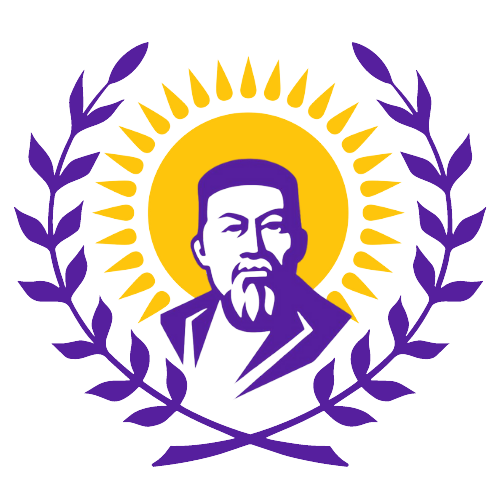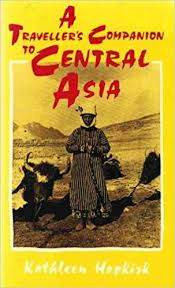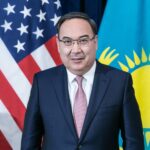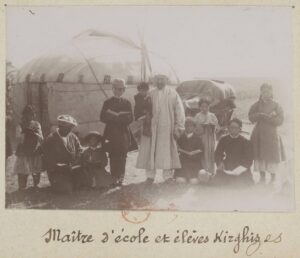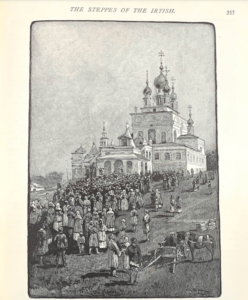Courtesy of Personal Library of Former Ambassador of Kazakhstan to the United States of America H.E. Erzhan Kazykhanov
Kathleen Hopkirk’s portrayals of Kazakhstan and the region entitled “A Traveller’s Companion to Central Asia” first published by John Murray Publishers Ltd. in London in 1993 would be a delightful treat for the readers of the Abai Center.
Wife of Peter Hopkirk, a British journalist and historian who wrote extensively on Central Asia and the “Great Game”, Kathleen acknowledges her husband’s contribution in writing this book full of interesting and unique observations.
Alma-Ata, capital of Kazakhstan, is now a large modern city in a beautiful situation, notes Kathleen Hopkirk. “Standing 2, 2600 feet above sea level in the northern foothills of the Zailisky Alatau mountains, facing the vast Kazakh Steppe, it has an extreme climate ranging from 40 degrees centigrade (104F) in summer to minus 34 degrees centigrade (-28F) in winter”, the author continues.
Mount Kok-Tybech, that Kathleen says can be reached by cable car, offers stunning panoramic views of the whole city. When sharing this, the author emphasizes that originally Alma Ata started as a small trading post, the Kazakh settlement of Almaty.

Image: Kok Tobe, Almaty
Photo credit: viewkazakhstan.com
Kathleen also touches upon the city’s history and shares accounts where much of Almaty (before fort Vierney) was destroyed by a severe earthquake in 1887 after which only small wooden buildings were erected and the town declined. She also notes that by the end of that century Vierney was mainly used as a place for exile for political prisoners.
After the Bolshevik Revolution Vierney was renamed Alma Ata (City of Apples) and in 1929 became the capital of the new Soviet Socialist Republic of Kazakhstan. Leon Trotsky was banished to Alma Ata in 1927, having lost his battle for leadership with Stalin, and lived there for a year with his wife. Although it was anxious and unhappy time for them, increasingly cut off from all links with the outside world, Natalya Trotsky left some vivid descriptions.
We would like to begin the review of this volume by sharing Natalya Trotsky’s (wife of Leon Trotsky) quote of 1927 that Kathleen cites in her chapter on modern capitals of Central Asia:
“A fine thing in Alma Ata was the snow, white, clean, and dry. As there was very little walking or driving, it kept its freshness all winter long. In the spring, it yielded to red poppies. Such a lot of them – like gigantic carpets! The steppes glowed red for miles around”
Amongst the factors that led to the city’s astonishing transformation, Kathleen highlights the completion of the Turksib railway in 1930 that connected Alma Ata was the major rail networks of the USSR, that had a positive impact on the city’s development. By the 1940s, the author explains, this led to pavement of streets and installation of sewage system, establishment of hydro-electric schemes to provide the city with the light and power. Interestingly, Kathleen references a well-known book by Stephen Graham’s where he shares his 1914 observations of Vierney:
“The capital of the Seven Rivers Land is Verney. The Verney has its own bazaar, its inns, dance halls, clubs and restaurants… it has its own own Covent Garden. Verney is a great market for fruit and vegetables”
Kathleen also notes that Alma Ata changed significantly in comparison to Stephen Graham’s days. She notes that Alma Ata has become not only a permanent capital, but also a heavily industrialized city. Furthermore, she adds that because of its situation, it has also become a centre for mountaineering expeditions.
We are sure that Kathleen’s accounts of Alma Ata will be of a great value and interest for all those who are interested in learning more about Kazakhstan’s southern capital.
